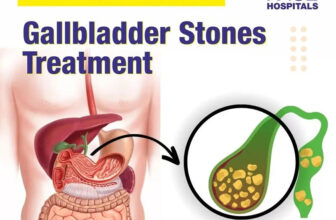
A beautifully aligned smile does more than enhance appearance; it contributes to overall oral health and functionality. One common dental concern that can disrupt this harmony is a misaligned midline. This issue occurs when the central line of your upper front teeth does not align with the central line of your lower front teeth. Misaligned midlines can affect your bite, lead to uneven wear on teeth, and even cause jaw discomfort. Fortunately, braces are an effective solution for correcting this issue. In this blog, we’ll explore what misaligned midlines are, their causes, and how braces can effectively address them.
What is a Misaligned Midline?
The midline is an imaginary vertical line that divides your face and smile into two halves. In an ideal alignment, the center of your upper front teeth (the maxillary midline) should match the center of your lower front teeth (the mandibular midline). When these midlines do not align, it can lead to a variety of aesthetic and functional problems.
Why is Midline Alignment Important?
- Functional Efficiency: Proper midline alignment ensures that the upper and lower teeth fit together correctly, allowing for effective biting and chewing.
- Aesthetic Appeal: A centered smile is often perceived as more attractive and can significantly boost confidence.
- Jaw Health: If left untreated, misalignment can lead to jaw discomfort, increased tooth wear, and even issues like temporomandibular joint (TMJ) disorders.
Causes of Misaligned Midlines
Several factors can contribute to a misaligned midline, including:
- Genetics: Some individuals are genetically predisposed to misaligned teeth and jaw discrepancies, making them more likely to experience midline issues.
- Tooth Size and Jaw Size Discrepancies: If your teeth are larger or smaller than the space in your jaw, this can lead to misalignment. This discrepancy can cause teeth to shift in unusual directions.
- Crowding or Spacing Issues: Crowded teeth or significant gaps between teeth can throw off the midline, as they may push or pull teeth into misalignment.
- Jaw Growth: As the jaw grows, its alignment can change. If the upper and lower jaws grow at different rates, this can lead to a misaligned midline.
- Bad Habits: Habits such as thumb sucking, prolonged pacifier use, or mouth breathing can affect the development of the teeth and jaw, leading to misalignment.
How Braces Work to Correct Misaligned Midlines
Braces are one of the most effective orthodontic treatments for correcting a misaligned midline. Here’s how they work:
1. Comprehensive Assessment
The first step in addressing a misaligned midline with braces is a thorough evaluation by an orthodontist. This assessment often includes X-rays, photographs, and impressions of your teeth to determine the extent of the misalignment and develop a personalized treatment plan.
2. Customized Treatment Plans
Based on your specific needs, your orthodontist will create a customized plan that outlines the type of braces to be used, the expected duration of treatment, and the goals for correcting the midline alignment.
3. Applying Braces
Braces consist of brackets bonded to each tooth and connected by a wire. These components work together to apply gentle, consistent pressure on the teeth, gradually moving them into the desired position. Here’s how braces can specifically address midline misalignment:
- Bracket Placement: The orthodontist strategically places brackets on the teeth to encourage proper alignment. The placement of brackets can be adjusted to ensure that the midline is being moved in the right direction.
- Adjustable Wires: The brackets’ wires can be adjusted during orthodontic visits. The orthodontist tightens the wires as treatment progresses to continue guiding the teeth toward the correct alignment.
For those considering braces treatment in Nerul, addressing a misaligned midline can significantly enhance both aesthetics and oral function. When the midline of the upper and lower teeth doesn’t align, it can lead to bite issues and even jaw discomfort. Braces work by gently repositioning the teeth over time, correcting the midline and ensuring proper alignment. With personalized orthodontic options available, patients in Nerul can restore balance to their smile and improve overall dental health.
4. Using Additional Appliances
In some cases, additional appliances may be necessary to assist in midline correction:
- Rubber Bands: Elastic bands help align the teeth more effectively and encourage proper jaw positioning.
- Expanders: If the misalignment is due to a narrow upper jaw, a palatal expander may widen the arch, allowing the midlines to align properly.
5. Regular Monitoring and Adjustments
Regular check-ups with your orthodontist are crucial for successful treatment. During these visits, adjustments will be made to the braces, ensuring that teeth continue to move in the right direction and that the midline alignment improves as planned.
Types of Braces for Midline Correction
Several braces are available, each suited for different orthodontic needs. Your orthodontist will recommend the best option based on your specific misalignment:
- Traditional Metal Braces: These are the most common type of braces and are highly effective for correcting midline misalignment. They are made of high-quality stainless steel brackets and wires.
- Ceramic Braces: These are similar to metal braces, but the brackets are made of tooth-colored ceramic, making them less visible. They work effectively for midline correction while offering a more aesthetic option.
- Lingual Braces: These braces are placed on the back of the teeth, making them virtually invisible from the front. They can effectively correct midline issues while providing a discreet treatment option.
- Clear Aligners (e.g., Invisalign): Clear aligners can be an option for mild to moderate midline misalignment. Removable and nearly invisible, making them a popular choice for adults seeking treatment.
Benefits of Braces for Misaligned Midlines
Braces offer numerous advantages for individuals dealing with misaligned midlines:
- Improved Aesthetic Appeal: Correcting the midline enhances the symmetry of your smile, boosting your self-esteem and confidence.
- Functional Improvement: Braces help improve biting and chewing efficiency by ensuring the upper and lower teeth fit together properly.
- Enhanced Oral Health: Well-aligned teeth are easier to clean, reducing the risk of cavities and gum disease.
- Jaw Alignment: Proper alignment can help alleviate tension in the jaw and prevent associated issues, such as TMJ disorders.
What to Expect During Treatment
Here’s a general overview of what you can expect if you undergo braces treatment for a misaligned midline:
- Initial Consultation: Your orthodontist will assess your teeth and create a personalized treatment plan based on your midline alignment issue.
- Fitting the Braces: The orthodontist will place brackets on your teeth and attach wires. This process typically takes about 1-2 hours.
- Regular Adjustments: You’ll need to visit your orthodontist every 4-8 weeks for adjustments. These appointments are crucial for monitoring progress and making necessary changes to the treatment plan.
- Treatment Duration: The duration of treatment varies based on the severity of the midline misalignment, but it typically lasts between 12 and 24 months.
- Post-Braces Care: After removing your braces, you may be required to wear a retainer to maintain your newly aligned midline and prevent shifting.
Conclusion
A misaligned midline can affect your smile’s function and aesthetics, but braces offer a reliable solution for correction. By gently moving teeth into proper alignment, braces help restore harmony to your smile and improve overall oral health. If you suspect a misaligned midline, consulting with an orthodontist is the first step toward achieving a balanced, confident smile. With the right treatment plan, you can enjoy the benefits of a well-aligned bite and a beautiful smile for years to come!







